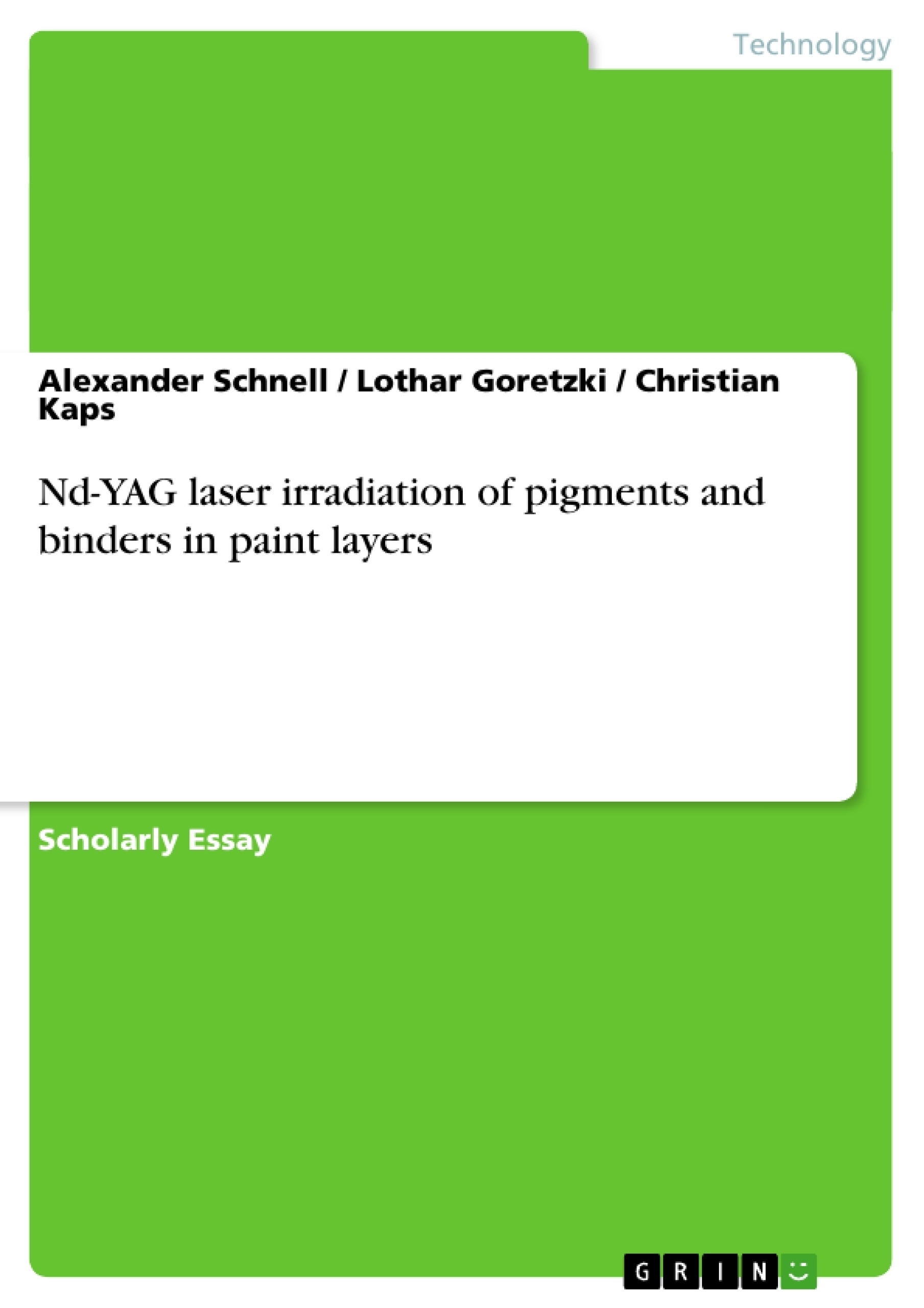Laser cleaning of polychrome surfaces is currently problematic due to the fact, that laser
irradiation can cause damage of the paint layers. A test program was worked out to
analyse the chemical and physical background of these typical “pigment blackening
effects”. The analytical methods ESEM, XRD, DTA, FTIR and NMR were used to
describe the reactions of inorganic pigments and organic binding media caused by laser
irradiation. The used laser system is commercially available, is currently used for the
cleaning of natural stone surfaces and works at a wavelength of 1064 nm. The
discoloration of pigments and paint layers was documented by colour measurement.
Further the measurement of discoloration thresholds of energy density (of pigments and
paint layers) was a main part of the research.
Inhaltsverzeichnis (Table of Contents)
- Abstract
- Introduction
- Experimental
- Results and discussion
- Effects of laser irradiation on pigments
- Effects of laser irradiation on binding media in paint layers
- Discoloration thresholds of laser fluence
- Conclusions
Zielsetzung und Themenschwerpunkte (Objectives and Key Themes)
This research project aims to explore the feasibility of using laser ablation for cleaning polychrome natural stone surfaces without causing any damage to the contained pigments and binders. The focus is on understanding the chemical and physical reactions occurring during laser irradiation of pigments and binders.
- Investigating the effects of laser irradiation on various pigments and binders.
- Determining the discoloration thresholds of laser fluence for different pigments and paint layers.
- Analyzing the chemical changes occurring in pigments and binders upon laser exposure.
- Evaluating the potential of laser cleaning for polychrome surfaces.
- Exploring the feasibility of improving laser cleaning equipment for greater control and accuracy.
Zusammenfassung der Kapitel (Chapter Summaries)
- Abstract: This chapter provides a brief overview of the research project, highlighting the challenges of laser cleaning polychrome surfaces due to pigment discoloration and the use of various analytical techniques to study these reactions.
- Introduction: This section outlines the established use of laser cleaning for natural stone surfaces and the problematic discoloration of pigments in polychrome surfaces during laser irradiation. It emphasizes the need for a cleaning method that preserves the integrity of pigments and binders.
- Experimental: This chapter details the experimental setup and methodology, including the specific pigments and binders tested, the laser system employed, and the analytical techniques utilized to study the effects of laser irradiation.
- Results and discussion:
- Effects of laser irradiation on pigments: This section examines the microscopic changes observed in pigments after laser treatment, highlighting the melting of pigment particles, the discoloration of certain pigments (e.g., zinc white and titanium white), and the potential causes of these effects.
- Effects of laser irradiation on binding media in paint layers: This part analyzes the gas phase produced during laser irradiation of paint layers using NMR spectroscopy, identifying compounds like glycerin, alkenes, alkanes, and aldehydes as reaction products, suggesting incomplete combustion of the volatile components.
- Discoloration thresholds of laser fluence: This section presents the results of discoloration threshold measurements for various pigments and paint layers, categorizing them based on their sensitivity to laser irradiation and highlighting the potential for successful laser cleaning depending on the energy density used.
Schlüsselwörter (Keywords)
The research focuses on the use of Nd-YAG lasers for the cleaning of polychrome surfaces, investigating the effects of laser irradiation on inorganic and organic pigments and binders. Key themes include pigment discoloration, laser fluence thresholds, chemical decomposition, phase changes, and the application of analytical techniques like ESEM, XRD, DTA, FTIR, and NMR for studying the reactions of pigments and binders. The research aims to evaluate the potential of laser cleaning for preserving cultural heritage objects.
- Citation du texte
- Dipl.-Ing. Alexander Schnell (Auteur), Lothar Goretzki (Auteur), Christian Kaps (Auteur), 2003, Nd-YAG laser irradiation of pigments and binders in paint layers, Munich, GRIN Verlag, https://www.grin.com/document/93398



